Ditapis dengan
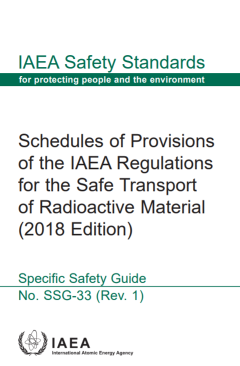
Schedules of provisions of the IAEA regulations for the safe transport of ra…
Radioactivity is a natural phenomenon and natural sources of radiation are features of the environment. Radiation and radioactive substances have many beneficial applications, ranging from power generation to uses in medicine, industry and agriculture. The radiation risks to workers and the public and to the environment that may arise from these applications have to be assessed and, if necessar…
- Edisi
- 2021
- ISBN/ISSN
- 978-92-0-121921-3
- Deskripsi Fisik
- 322 p
- Judul Seri
- IAEA Safety Standards Series No. SSG-33 (Rev. 1)
- No. Panggil
- 656.073 IAE s
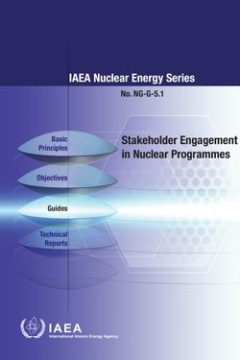
Stakeholder Engagement in Nuclear Programmesl : IAEA Nuclear Energy Series NG…
As societies evolve and citizens have increasingly easy access to more information, stakeholder engagement has become recognized as a growing area of strategic value for the development of nuclear programmes. Nuclear science and technology often face unique challenges with regard to public understanding and acceptance. It is generally recognized that nuclear technologies contribute significantl…
- Edisi
- 2021
- ISBN/ISSN
- 978–92–0–133421–3
- Deskripsi Fisik
- 78 p
- Judul Seri
- IAEA Nuclear Energy Series NG-G-5.1
- No. Panggil
- 621.039:005.331 IAE s
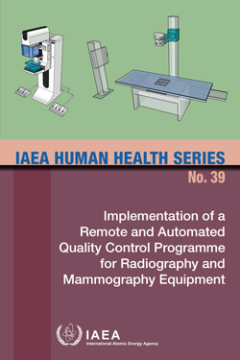
Implementation of a Remote and Automated Quality Control Programme for Radiog…
This publication provides a framework for the quality control (QC) of radiographic and mammographic imaging systems using remote and automated tools. The methodology provided in this publication is designed to be easy to implement, in order to support initiation of remote/automated QC programmes. It is based on simple, inexpensive test objects and promotes collection of data in a uniform, harmo…
- Edisi
- -
- ISBN/ISSN
- 978-92-0-102621-7
- Deskripsi Fisik
- 127 Hal
- Judul Seri
- -
- No. Panggil
- 618.1907572
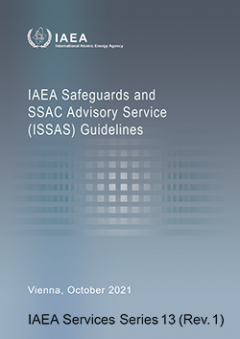
IAEA Safeguards and SSAC Advisory Service (ISSAS) Guidelines | IAEA Services …
One of the IAEA’s peer review and advisory services is the IAEA Safeguards and SSAC Advisory Service (ISSAS). Established in 2004, the service supports the effective and efficient implementation of IAEA safeguards by identifying opportunities for enhancing State systems of accounting for and control of nuclear material (SSACs) and increasing cooperation between State or regional authorities w…
- Edisi
- -
- ISBN/ISSN
- -
- Deskripsi Fisik
- 36 Hal
- Judul Seri
- -
- No. Panggil
- 621.48335

Risk Aggregation for Nuclear Installations | IAEA TECDOC No. 1983
This publication describes the practices and challenges related to risk aggregation for various hazards, various operational states, and considering all sources of potential radioactive releases at a nuclear installation site. It provides a methodology and technical basis for risk aggregation and describes the good practices and practical examples of risk aggregation developed by IAEA Member St…
- Edisi
- -
- ISBN/ISSN
- 978-92-0-135421-1
- Deskripsi Fisik
- 143 P
- Judul Seri
- -
- No. Panggil
- 621.48 IAE R
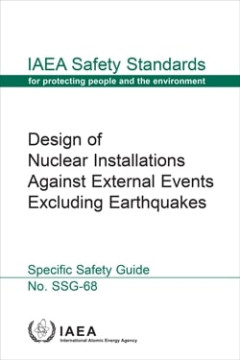
Design of Nuclear Installations Against External Events Excluding Earthquakes…
The status of the IAEA safety standards derives from the IAEA’s Statute, which authorizes the IAEA to establish or adopt, in consultation and, where appropriate, in collaboration with the competent organs of the United Nations and with the specialized agencies concerned, standards of safety for protection of health and minimization of danger to life and property, and to provide for their appl…
- Edisi
- IAEA Safety Standards Series.
- ISBN/ISSN
- 978-92-0-136121-9
- Deskripsi Fisik
- 112 p
- Judul Seri
- IAEA Safety Standards Series.
- No. Panggil
- 621.039.58 IAE d
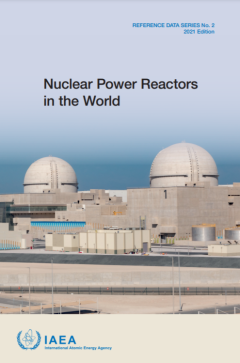
Nuclear Power Reactors in the World 2021 Edition Reference Data Series No. 2
This is the 41st edition of Reference Data Series No. 2, which presents the most recent reactor data available to the IAEA. It contains summarized information as of the end of 2020 on power reactors operating, under construction and shut down as well as performance data on reactors operating in the IAEA Member States. The information is collected through designated national correspondents in th…
- Edisi
- 2021
- ISBN/ISSN
- 978-92-0-124421-5
- Deskripsi Fisik
- 94 p
- Judul Seri
- -
- No. Panggil
- 539.7 IAE n
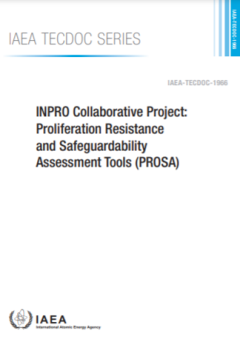
INPRO Collaborative Project: Proliferation Resistance and Safeguardability As…
This publication presents the results of the INPRO collaborative project: Proliferation Resistance and Safeguardability Assessment (PROSA) Tools. The PROSA assessment process has been developed to specifically address the needs of national self-assessors performing an INPRO Nuclear Energy System Assessment of sustainability. The main objective of this project is to explore approaches to make th…
- Edisi
- 2021
- ISBN/ISSN
- 978-92-0-123021-8
- Deskripsi Fisik
- 108 p
- Judul Seri
- -
- No. Panggil
- 621.483 IAE i
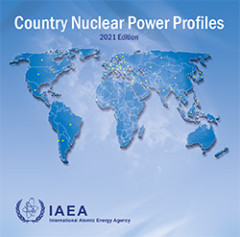
Country Nuclear Power Profiles 2021 Edition | IAEA-CNPP/2021
The Country Nuclear Power Profiles (CNPP) publication compiles background information on the status and development of nuclear power programmes across participating International Atomic Energy Agency (IAEA) Member States. The publication summarizes organizational and industrial aspects of nuclear power programmes and provides information about the relevant legislative, regulatory and internatio…
- Edisi
- 2021
- ISBN/ISSN
- -
- Deskripsi Fisik
- -
- Judul Seri
- -
- No. Panggil
- -
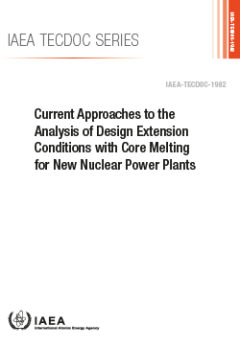
Current Approaches to the Analysis of Design Extension Conditions with Core M…
The requirement of deriving design extension conditions (DEC), which are understood to comprise both conditions in events without significant fuel degradation and conditions in events with core melting, were introduced in IAEA Safety Standards Series No. SSR-2/1 (Rev. 1), Safety of Nuclear Power Plants: Design [1]. In SSR-2/1 (Rev. 1) [1], DEC were introduced for the purpose of further improvin…
- Edisi
- -
- ISBN/ISSN
- 978-92-0-133921-8
- Deskripsi Fisik
- 168 Hal
- Judul Seri
- -
- No. Panggil
- -
 Karya Umum
Karya Umum  Filsafat
Filsafat  Agama
Agama  Ilmu-ilmu Sosial
Ilmu-ilmu Sosial  Bahasa
Bahasa  Ilmu-ilmu Murni
Ilmu-ilmu Murni  Ilmu-ilmu Terapan
Ilmu-ilmu Terapan  Kesenian, Hiburan, dan Olahraga
Kesenian, Hiburan, dan Olahraga  Kesusastraan
Kesusastraan  Geografi dan Sejarah
Geografi dan Sejarah